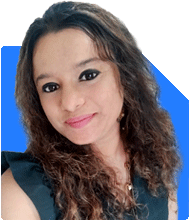50, No Pension, 1.85 Cr: How to Diversify for 50k/month & Globetrotting?
Ramalingam Kalirajan |10906 Answers |Ask -Follow
Mutual Funds, Financial Planning Expert - Answered on Jul 30, 2024
He has an MBA in finance from the University of Madras and is a certified financial planner.
He is the director and chief financial planner at Holistic Investment, a Chennai-based firm that offers financial planning and wealth management advice.... more

I am 50 years old and recently retired with no pension. I have 1.3 Cr as FD, 20L in PF, and 50L in AMC. My health insurance coverage is for 50 L which I want to increase to 1 Cr. I own an apartment where I reside and have a plot where I want to live as a minimalist in a tiny house in the next 3 years and travel the world. I have no other liabilities. Please help me structure my finances to diversify my portfolio to maximize returns and have monthly Rs 50K for my expenditure.
Current Assets
Fixed Deposit (FD): Rs 1.3 Crores
Provident Fund (PF): Rs 20 Lakhs
Mutual Funds (AMC): Rs 50 Lakhs
Health Insurance: Rs 50 Lakhs
Goals and Requirements
Monthly Income: Rs 50,000
Increased Health Insurance: From Rs 50 Lakhs to Rs 1 Crore
Minimalist Home: Within 3 years
Travel Fund: Continuous
Investment Strategy
Emergency Fund
Keep an emergency fund. It should cover 12 months of expenses. This amounts to Rs 6 Lakhs. Keep this in a liquid fund or savings account for easy access.
Health Insurance
Increase your health insurance coverage to Rs 1 Crore. You can do this by either enhancing your current policy or purchasing a new one.
Monthly Income Generation
To generate Rs 50,000 per month, we need to consider various investment options:
Senior Citizen Savings Scheme (SCSS): Invest up to Rs 15 Lakhs. This offers regular interest payouts. It is safe and offers good returns.
Monthly Income Plans (MIPs): These funds offer regular income and some capital appreciation. Invest Rs 30 Lakhs in MIPs for a balanced risk-reward ratio.
Systematic Withdrawal Plan (SWP) in Mutual Funds: Invest Rs 50 Lakhs. Withdraw Rs 25,000 per month. This allows capital growth while providing regular income.
Long-Term Investments
For the remaining corpus, consider the following:
Balanced Advantage Funds: Invest Rs 25 Lakhs. These funds adjust allocation between equity and debt. They provide stability and growth.
Debt Funds: Invest Rs 20 Lakhs. Debt funds offer safety and steady returns. They help preserve capital and provide regular income.
Travel Fund
Set aside Rs 20 Lakhs for your travel fund. You can keep this in a mix of short-term debt funds and liquid funds. This ensures easy access to funds when needed.
Minimalist Home Fund
Allocate Rs 25 Lakhs for building your minimalist home. Keep this in a fixed deposit or short-term debt funds to ensure safety and growth over three years.
Regular Review
Review your portfolio every six months. Adjust your investments based on performance and changing needs. This ensures your investments stay aligned with your goals.
Final Insights
Your current assets provide a strong foundation. Diversifying into different investment options will maximize returns and provide regular income. Regularly review and adjust your portfolio to stay on track with your goals.
Best Regards,
K. Ramalingam, MBA, CFP
Chief Financial Planner
www.holisticinvestment.in
You may like to see similar questions and answers below
Ramalingam Kalirajan |10906 Answers |Ask -Follow
Mutual Funds, Financial Planning Expert - Answered on May 23, 2024
Ramalingam Kalirajan |10906 Answers |Ask -Follow
Mutual Funds, Financial Planning Expert - Answered on May 24, 2024
Jinal Mehta | Answer |Ask -Follow
Financial Planner - Answered on Jun 24, 2024
Ramalingam Kalirajan |10906 Answers |Ask -Follow
Mutual Funds, Financial Planning Expert - Answered on Nov 02, 2024
Ramalingam Kalirajan |10906 Answers |Ask -Follow
Mutual Funds, Financial Planning Expert - Answered on Feb 18, 2025
Ramalingam Kalirajan |10906 Answers |Ask -Follow
Mutual Funds, Financial Planning Expert - Answered on Dec 19, 2025
Nayagam P P |10859 Answers |Ask -Follow
Career Counsellor - Answered on Dec 19, 2025
Ramalingam Kalirajan |10906 Answers |Ask -Follow
Mutual Funds, Financial Planning Expert - Answered on Dec 19, 2025
Ramalingam Kalirajan |10906 Answers |Ask -Follow
Mutual Funds, Financial Planning Expert - Answered on Dec 19, 2025
Ramalingam Kalirajan |10906 Answers |Ask -Follow
Mutual Funds, Financial Planning Expert - Answered on Dec 19, 2025
Radheshyam Zanwar |6751 Answers |Ask -Follow
MHT-CET, IIT-JEE, NEET-UG Expert - Answered on Dec 19, 2025
Radheshyam Zanwar |6751 Answers |Ask -Follow
MHT-CET, IIT-JEE, NEET-UG Expert - Answered on Dec 19, 2025
Samraat Jadhav |2514 Answers |Ask -Follow
Stock Market Expert - Answered on Dec 18, 2025
Reetika Sharma |432 Answers |Ask -Follow
Financial Planner, MF and Insurance Expert - Answered on Dec 18, 2025
Reetika Sharma |432 Answers |Ask -Follow
Financial Planner, MF and Insurance Expert - Answered on Dec 18, 2025























